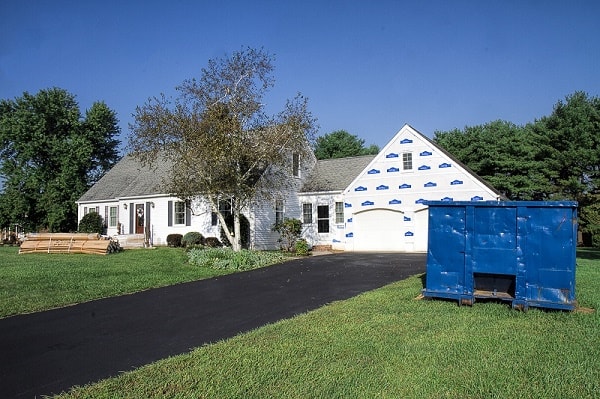While you may not give the gutters around your home much thought, they are incredibly important. It is the gutters you have to thank for every door, window frame, and siding that is not rotting from water damage right now.
Gutters are also responsible for protecting the foundations of your home from cracking and preventing flooding in the basement.
With all of this work that they do, it is a big deal when your guttering gets damaged.
Cochranville, Pennsylvania homeowners can now enjoy an easy dumpster rental experience thanks to Chester County’s Eagle Dumpster Rental.
Luckily, not every damaged gutter requires expensive call-out fees or extensive repair work to be done as you can repair them yourself.
How To Repair Sagging Gutters
Over time, gutters can sag due to debris pileups, weather issues, or other conditions which can be out of your control.
Regardless of the cause, it is important to fix gutters that are pulling away from the house as this can cause drainage problems or foundational issues.
- Use a claw hammer, pry bar, or locking pliers to remove the spikes that are currently holding the gutters to your house. If your gutters are held on by screws, then use a drill to unscrew them
- If you are working with a gutter that is currently held on by spikes, then you should invest in gutter screws to replace them, as these give a sturdier hold
- When working with a screwed gutter, this is the time to replace any screws that are damaged, bent or broken
- Line the gutter back up using the current screw holes. Drill the new screws into these positions, being careful to not drill too far, which will bend the gutter again
If you feel as though the screws holding your gutter up are not snug enough, you can fill in the gaps with small strips of wood. Coat the wood with all-weather adhesive and push them into the screw holes before drilling, as this will make a snug fit.
How To Fix Gutter Leaks
Leaky gutters are a sure-fire way to find water damage and foundation issues within your home, so they need to be repaired quickly.
Almost all leaks in gutters are caused by two sections of the pipes falling apart, which can be caused by extreme weather or temperature fluctuations.
Repairing this issue does take some time, but it is simple enough to DIY.
You Will Need
- Screwdriver
- Utility knife
- Medium grit sandpaper
- Caulking gun, silicone caulk
- Wire brush
- Matching spray paint
How To Make Gutter Seam Repairs
- Using the utility knife, chip away the caulk around the screws which are holding the two leaking pieces of gutter in place
- Remove the screws using a screwdriver and pull the gutter pieces apart
- Using the utility knife again, remove the remaining caulk that may be left on the pieces of gutter you have taken from the wall
- Any rust that may be on either piece of the gutter can be removed using a wire brush. You can use this brush to scrape away rust before smoothing the area with sandpaper and filling the faded color with spray paint. Make sure the gutter is dried completely before the next step
- Use the caulking gun to apply the silicone sealant to the inside lip of the ‘downhill’ gutter piece, which is the bottom pipe
- Carefully lower the ‘uphill’ or top piece of the gutter into place and press both pieces firmly together for 30 seconds to seal
- Replace all screws and apply the sealant around them for a snug fit
Make sure to remove all of the old caulk before attempting to fix your new guttering into place, as fresh caulk will not seal onto residue.
How To Fix Overflow Problems
If water regularly overflows from your guttering, then you are not dealing with clogged pipes but rather pipes that are not sloped enough. Guttering needs to be sloped enough so the water can run freely through them.

Your guttering should slope downwards a quarter of an inch for every 10 feet. When this ratio is off, overflow occurs.
This issue can be resolved with some DIY skills:
- Starting at the furthest end, measure the distance between the bottom of the fascia board where the downspout is attached and the bottom of the gutter. Mark these measurements to refer to
- Move 10 feet down the gutter and measure the fascia board a quarter of an inch lower than the original measurement
- Reposition this section of the gutter according to your new measurements, ensuring that it now rests on the new mark you have made by unscrewing and screwing whenever needed
- Continue measuring the gutter in 10-foot segments, making sure that each section now lies a quarter of an inch lower than it used to
- Once you have completed this process, use the garden hose to make sure water flows freely through the gutter
How To Prevent Water Pooling Around The House
Water pooling around the foundations of your home is not something to ignore, and the repair could be incredibly easy to do alone.
- Place a splash block under the downspout, as this will redirect water away from your house
- Attach a roll-up sleeve to the downspout, which will capture rainwater and push it away from your house. Following a downpour, you can roll up the sleeve to prevent it from getting damaged
